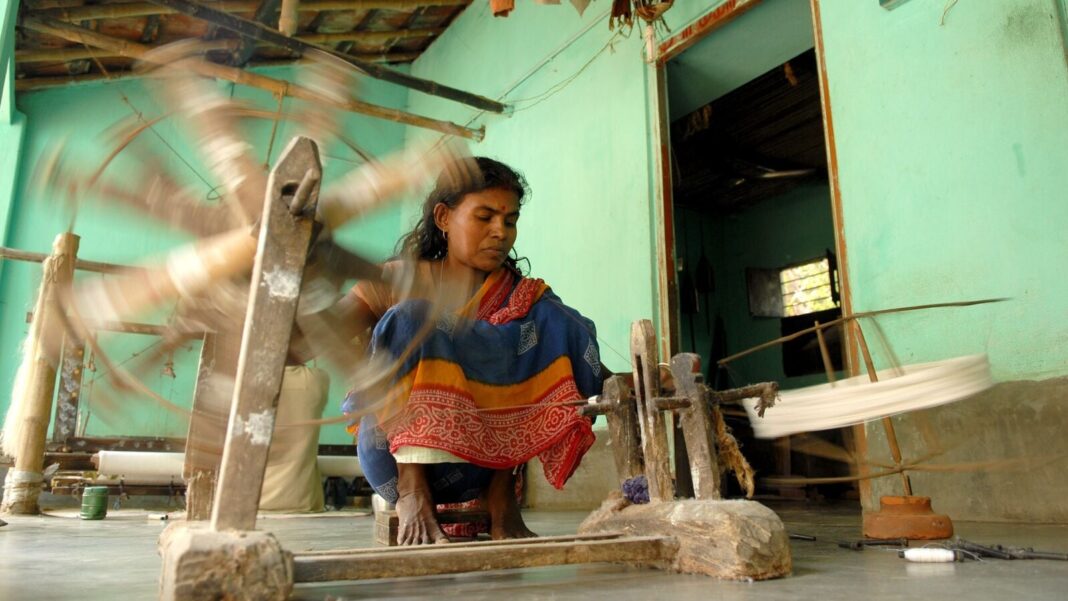In Short:
Since 2015, nearly 2,000 new products have registered under the ‘India Handloom’ brand to boost exports of local textiles. The government supports the handloom industry through financial aid, training, low-cost loans, and subsidies on raw materials. They’ve also ensured social welfare benefits and mandated local textile purchases for government offices, responding to a decline in textile exports.
<div id="article-index-0">
<h1>India's Handloom Heritage Thrives with New Product Registrations</h1>
<p><strong>New Delhi</strong>: Since its launch in 2015, an impressive <strong>2,000 new products</strong> have been registered under the beloved <strong>‘India Handloom’</strong> brand, reflecting a commitment to boost exports of our indigenous textiles, as announced by the <strong>Ministry of Textiles</strong> on Tuesday.</p>
</div>
<div id="article-index-1">
<h2>Significant Milestones</h2>
<p>The ministry proudly reported that <strong>1,998 products</strong> spanning <strong>184 categories</strong> have been registered under the <strong>India Handloom</strong> label as of August 2015. This robust growth underscores the ongoing efforts to keep our traditional handicrafts alive while opening new avenues for export.</p>
</div>
<div id="article-index-2">
<h2>Empowerment Through Indigenous Brands</h2>
<p>The surge in new registrations is part of a larger government initiative aimed at empowering the handloom industry. This comprehensive strategy not only seeks to reduce production costs and provide better access to credit but also focuses on the well-being of the artisans and workers involved in this vibrant sector.</p>
</div>
<div id="article-index-3">
<h2>Financial Support for Handloom Workers</h2>
<p>As part of these efforts, the <strong>National Handloom Development Programme</strong> has been pivotal in offering financial assistance. Eligible handloom workers and organizations can benefit from upgrades in looms and accessories, solar lighting installations, and even the construction of worksheds. The initiative also emphasizes product and design development, alongside vital marketing support to showcase Indian textiles both domestically and internationally.</p>
</div>
<div id="article-index-4">
<h2>Accessible Credit Schemes</h2>
<p>To further support these artisans, a concessional credit scheme known as <strong>MUDRA Loans</strong> has been introduced, allowing handloom organizations or workers to secure loans over a span of three years. Furthermore, the ministry is ensuring a steady supply of subsidized raw materials, under the <strong>Raw Material Supply Scheme</strong>. This includes transport subsidies, facilitating the delivery of yarn directly to the artisans’ doorsteps, along with a <strong>15% Price Subsidy</strong> on various natural fiber yarns.</p>
</div>
<div id="article-index-5">
<h2>Social Welfare Initiatives</h2>
<p>The government's commitment extends beyond financial support. They have rolled out social welfare programs featuring health and life insurance options, as well as scholarships for the higher education of handloom workers' children. In an effort to bolster sales, the government is also stepping up as a major buyer of handloom products, facilitating connections for producers to sell directly on e-marketplaces.</p>
</div>
<div id="article-index-6">
<h2>Direct Support from the Government</h2>
<pThe government has made it mandatory for public offices to acquire <strong>20%</strong> of their textile needs from local handloom clusters, co-operative societies, or self-help groups. Additionally, state governments and Union Territories are encouraged to direct their handloom corporations and agencies to purchase the finished goods directly from handloom weavers.</p>
</div>
<div id="article-index-7">
<h2>Addressing Declining Exports</h2>
<p>These vibrant efforts come at a critical juncture as India's textile exports have experienced a slight dip. According to the government's <strong>Niryat portal</strong>, textile exports have decreased marginally from <strong>FY23</strong> to <strong>FY24</strong>, totaling approximately <strong>USD 34.4 billion</strong> (around <span class="webrupee">₹</span>2.8 trillion). However, there is hope with over <strong>USD 8 billion</strong> worth of textile exports recorded until June 2024 in <strong>FY25</strong>.</p>
</div>This rewritten article maintains the original context and facts while presenting the information in a more engaging and human tone, with proper HTML formatting and section headings.





